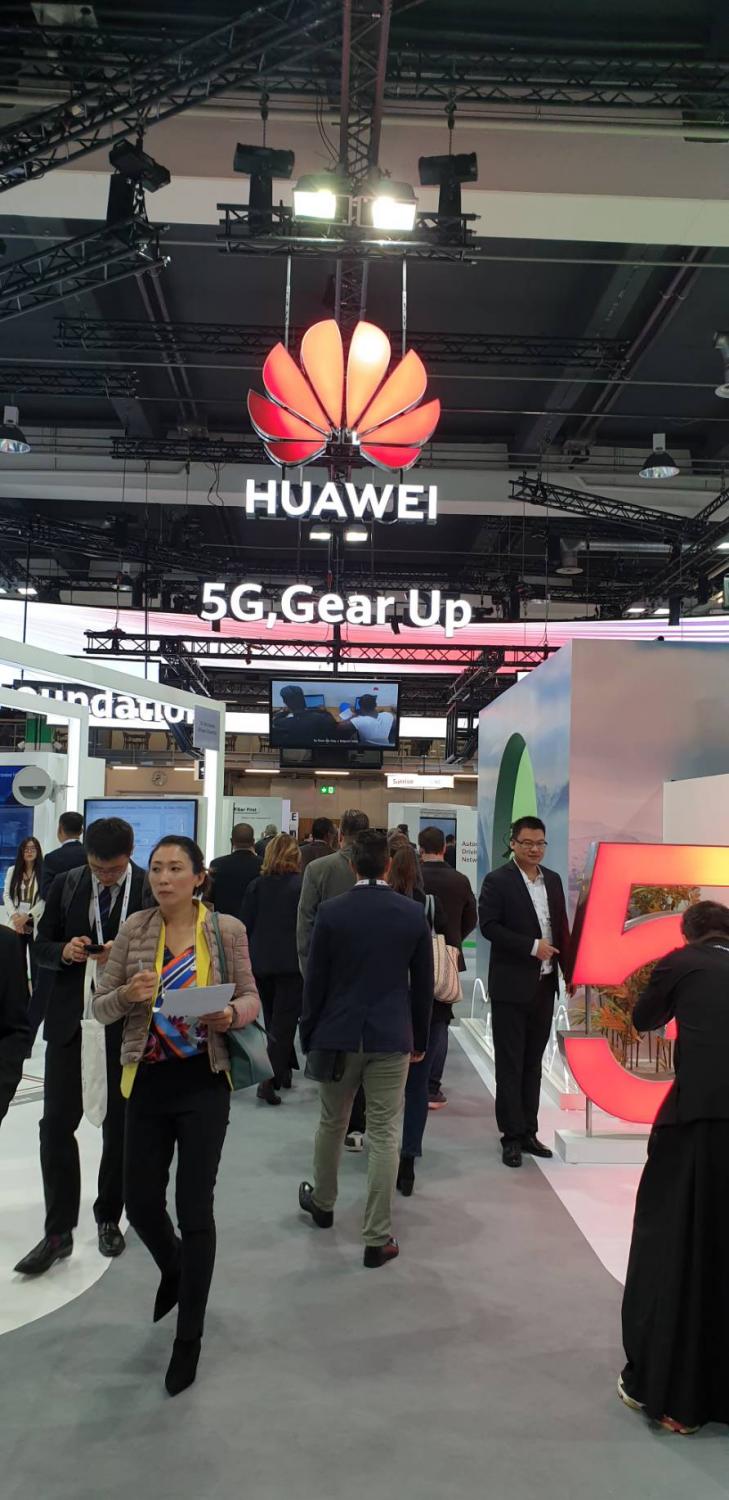
Huawei, a leading global provider of information and communications technology (ICT) infrastructure and smart devices, is considering Thailand as its main market for 5G ecosystem development and use in Southeast Asia, says its senior executive.
The executive, who spoke on condition of anonymity, sees Huawei, the Thai government, the National Broadcasting and Telecommunications Commission (NBTC), universities and the media as continuing to strengthen cooperation to develop Thailand's 5G ecosystem.
In tandem with the Digital Economy and Society (DES) Ministry, Huawei set up a 5G testbed, the first of its kind in the region, earlier this year in the Sri Racha district of Chon Buri, he said.
The 5G site at Kasetsart University's Sri Racha campus involves 360-degree augmented reality/virtual reality; remote driving; multi-HD video and smart buses. It is designed to serve as a R&D centre for new technologies, with researchers offering consultations and a full range of innovation.
The NBTC has been tasked with providing spectrum ranges for the 5G trial, in cooperation with major mobile operators and internet service providers, the Huawei executive told the Bangkok Post at the 10th Huawei Mobile Broadband Forum (MBBF) recently held in Zurich.
The main focus of this year's forum is the introduction of 5G for commercial use, the Internet of Things (IoT) and the mobile broadband industry.
"We're trying to showcase the potential of the 5G system in Thailand. We want to hear from our stakeholders," he said.
"We think Thailand will become the most important market for us, particularly in Southeast Asia, which is why we set up our regional headquarters in Bangkok. We want to do something more and better in Thailand."

The Huawei forum in Zurich promoted commercial 5G development, including use of the Internet of Things, to the mobile broadband industry.
Huawei wants to create different technological promotion activities in Thailand. It is ready to cooperate with the government, private sector and the media to set up a good 5G ecosystem, said the executive.
"We are not a decision maker. We are only a technical provider with experience in the 5G system," he said.
"We successfully developed 3G and 4G in Europe. We're doing 5G commercial contracts with partners all over the world and 50% of them are in Europe. We're looking for more partners. We're willing to share these lessons with Thailand. I believe the media can play a greater role in spreading this information."
WHAT IS 5G?
The Huawei executive said most people in the world are still happy with 4G and are not concerned about 4G connections. However, some people expressed concern about connections when many people use their mobile phones at the same time in the same place, such as an opera house.
"Imagine many people in an opera house take pictures and want to share them immediately on Instagram or Facebook. It is very difficult when many people do this simultaneously. The uplink-downlink transformation of the channel transfer function is very limited and congested. 4G is not designed for this kind of scenario," he said.
5G is the only platform designed to cope with future technology such as IoT.
Everything in the future will be connected with this network in one place at the same time, said the executive.
He said 5G helps this process in three ways. It is extremely speedy, has massive connections and is short with low latency. Without each connector, it cannot be called 5G, said the executive.
4G can be transformed to 5G, as all devices and equipment have been designed to connect 5G, he said.
THAILAND NEXT
The NBTC announced Thailand may soon be the first country in Asean to adopt 5G if the infrastructure is prepared by the private sector.
The executive said 5G development in different countries face varying challenges.
To prepare for this wireless system, first Thailand must make spectrum and bandwidth suitable for 5G. The NBTC is responsible for this issue.
Second, prices must be reasonable. For example, 3G and 4G in some countries is costly as operators paid substantial fees for licences.

A forum about 5G innovation development is crowded with invited foreign reporters, media operators and those interested in the wireless and future technologies at the 10th Huawei Mobile Broadband Forum (MBBF)2019 recently held in Zurich of Switzerland.
The government should reduce the burden on operators to create a better environment for 5G investment, he said.
Startups, state agencies and universities can work together to create the 5G ecosystem, said the executive.
The government should educate people about the 5G system and the technologies involved, supporting 5G and integrating it in the ecosystem to set up a good business model.
GLOBAL 5G
This is the 10th MBBF, with the first held in Oslo, Norway in 2010.
In those days, the industry was rolling out 4G and Huawei had just started exploring 5G.
In just one year after the standards were completed, 40 carriers from 20 markets launched commercial 5G networks and the company anticipates more than 60 commercial 5G networks by year-end, said Huawei deputy chairman Ken Hu.
"At the same time, there has been great progress on the device side. By September, there were more than 130 5G devices on the market, including CPEs and smartphones," he said.
"Consumers really love it. South Korea was the first market to launch commercial 5G. In just six months after commercial launch, there were more than 3.5 million people using 5G services there."
Mr Hu said 5G is creating an amazing user experience.
In Switzerland, the company has already achieved speeds of up to 1.5 Gbps, around 20 times faster than the current 4G speed. People love the applications too, he said.
5G is enabling new apps in many industries, such as a mine in Inner Mongolia that faced challenges in terms of safety, efficiency and cost for many years that now uses the technology, said Mr Hu.
In May, Huawei and China Mobile developed a driverless truck solution using 5G. The mine now saves US$160,000 per truck, per year. With 30 trucks, that's big money, he said.
More importantly, because the trucks are driverless, people are no longer exposed to the dangerous working environment.
"This is an impressive use case for 5G technology. And it's just the beginning. We can expand this kind of solution to revolutionise all vertical industries," said Mr Hu.
He called on all countries to make the most of 5G. They need to work together to deal with challenges, said Mr Hu.
He hopes governments can provide more spectrum resources, continuous bands, large bandwidth and at least 80-100MHz for each carrier.
Governments should start planning to meet new spectrum demand for the next 5-10 years, said Mr Hu.
He said in many countries, he's seeing positive examples where governments have helped lower costs and provide more flexible pricing models.
"This is a win-win situation for both sides -- carriers pay less for spectrum resources and the country can enjoy earlier and better 5G services," said Mr Hu.
"We hope to see more governments drafting regulatory measures to help carriers build 5G networks more efficiently and at a reasonable cost."
Huawei is building platforms to support cross-sector innovation on 5G called 5G Joint Innovation Centers.
In Zurich, Huawei opened the first centre in Europe together with Sunrise. Now Huawei and Sunrise are working with local partners on pilot projects for smart farming, smart manufacturing and smart resorts powered by 5G.
"Every country has its own strengths. These are the areas we can focus on and combine 5G technology with industry-specific solutions to enhance their competitiveness," said Mr Hu.